
Do you have a question about the Ingersoll-Rand CSA XHP900WCAT and is the answer not in the manual?
| Model | XHP900WCAT |
|---|---|
| Category | Air Compressor |
| Type | Rotary Screw |
| Free Air Delivery | 900 cfm |
| Engine | Caterpillar C9 |
| Fuel Capacity | 150 gallons |
| Drive Type | Direct Drive |
| Cooling Method | Air Cooled |
| Control Type | Electronic |
| Rated Operating Pressure | 150 PSI |
| Noise Level | 76 dB(A) |
General safety warnings and instructions for operating the machine safely.
Information regarding safe operation, maintenance, and machine specifications.
Precautions and hazards associated with the handling and use of compressed air.
Details on substances used in the machine and potential health hazards.
Safety guidelines for handling and jump-starting the machine's battery.
Precautions for dealing with hot engine coolant and steam from the radiator.
Guidelines for safely loading, transporting, and towing the compressor unit.
Explanation of different safety decal types (Danger, Warning, Caution, Notice) and their meanings.
Overview of compressor models and their key specifications.
Technical data for the compressor unit.
Details on the diesel engine powering the compressor.
Information on lubricant, coolant, and fuel capacities for the machine.
Physical dimensions and measurement units for the compressor.
Details related to the running gear, tires, and towing specifications.
List of part numbers for essential service components like filters.
Detailed explanation of each gauge, switch, button, and indicator on the control panel.
Essential checks and actions to perform before towing the compressor unit.
Maximum towing speeds and requirements for steerable axle units.
Instructions for positioning the unit, managing out-of-level operation, and securing it.
Information on mounting the compressor package directly to trailers or frames.
Steps for safely disconnecting the compressor from the towing vehicle.
Pre-start checks including fluid levels, battery, and system pressure relief.
Procedures for starting the compressor, including cold weather and booster starting.
Specific steps for starting the compressor in cold weather conditions.
Steps for safely shutting down the compressor unit.
Details on the machine's protective shutdown sensors and switches.
Explanation of automatic shutdown features and diagnostic indicator lamps.
Step-by-step guide for adjusting the pressure regulation system.
A comprehensive chart detailing maintenance tasks and their recommended intervals.
Overview of routine maintenance tasks and where to find detailed information.
Critical safety steps to follow before performing any maintenance on the machine.
How to test the low engine fuel level switch and other protective systems.
Checking the scavenge line for obstructions during oil changes.
Instructions for removing, inspecting, and replacing the compressor oil filter element.
Procedure for removing and replacing the compressor oil separator element.
Guidelines for cleaning the compressor oil cooler and engine radiator for optimal efficiency.
Instructions for replacing the air filter element and cleaning the air cleaner.
Ensuring air inlets and outlets are clear of debris for proper ventilation.
Checking fan mounting bolts and fan belt tension and wear.
Recommendations for fueling the tank and draining sediment or condensate.
Information on replacing the filter element in the fuel filter water separator.
Periodic inspection of hoses and pipework for cracks, leaks, and damage.
Checking electrical terminals for security and signs of overheating.
Keeping battery terminals clean and ensuring the battery restraint is tight.
Inspecting the pressure system for signs of damage, corrosion, or wear.
Referencing General Data section for correct tire pressure specifications.
Checking wheel nut torque and securing bolts for the running gear.
General guidelines for checking oil levels and refilling the machine.
Procedure for draining and replacing compressor lubricating oil.
Instructions for packing wheel bearings with grease every 12 months.
Guide to selecting the correct compressor fluid based on operating pressure and ambient temperature.
Overview of the trouble shooting process and how to use the chart.
A systematic approach to diagnosing and resolving compressor problems.
Questions to consider before attempting to diagnose or fix a problem.
Emphasizes checking the easiest and most obvious causes first for quick resolution.
Importance of verifying simple solutions and not disassembling unnecessarily.
Ensuring the root cause of a failure is identified and corrected to prevent recurrence.
Guidance for troubleshooting electrical and electronic issues, referring to a separate manual.
A guide to identifying compressor complaints and their potential causes and corrective actions.
Common causes and corrective actions for unexpected unit shutdowns.
Troubleshooting issues related to the compressor failing to start or run properly.
Causes and solutions for the engine overheating during operation.
Diagnosing and correcting low engine oil pressure conditions.
Causes and corrective actions for low voltage output from the alternator.
Addressing issues leading to excessive discharge air temperatures.
Troubleshooting causes for reduced engine speed or RPM.
Identifying and resolving causes of excessive vibration in the compressor.
Diagnosing and fixing issues causing low output of compressed air.
Addressing causes of premature air cleaner element clogging or failure.
Troubleshooting why the compressor fails to transition to the unloaded state.
Identifying and correcting problems causing the safety valve to activate.

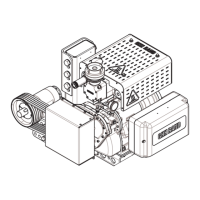

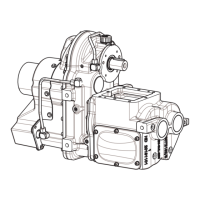
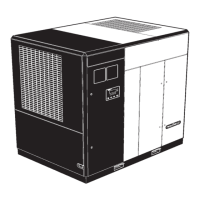
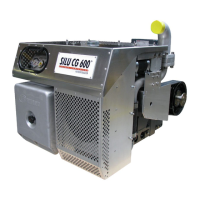
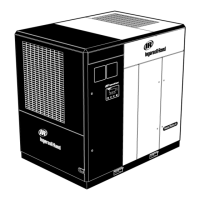

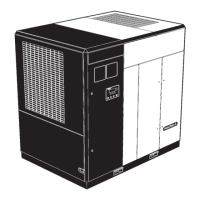

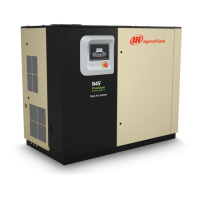

